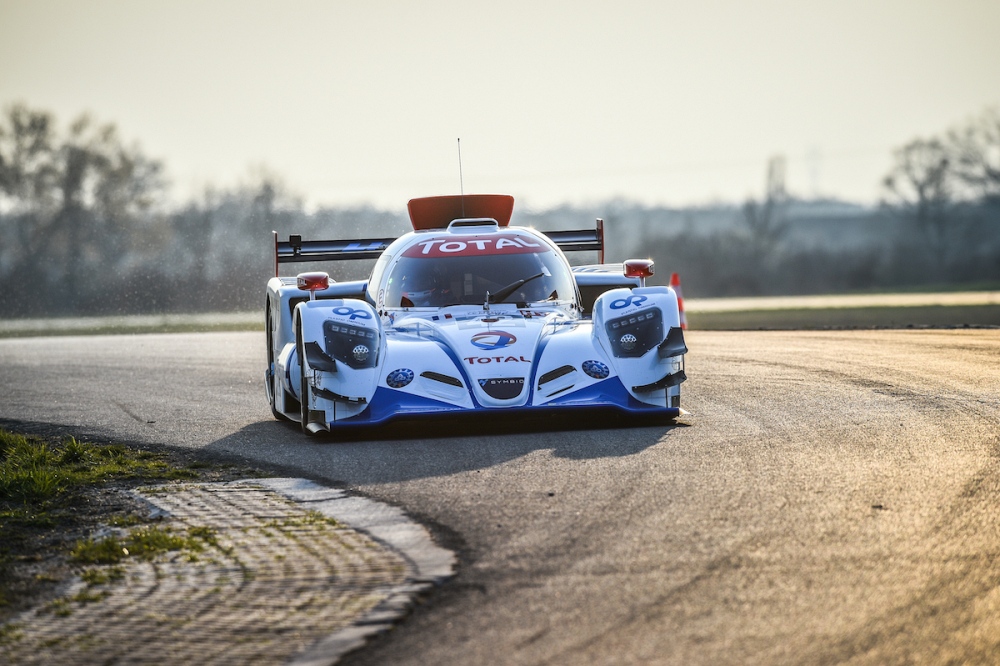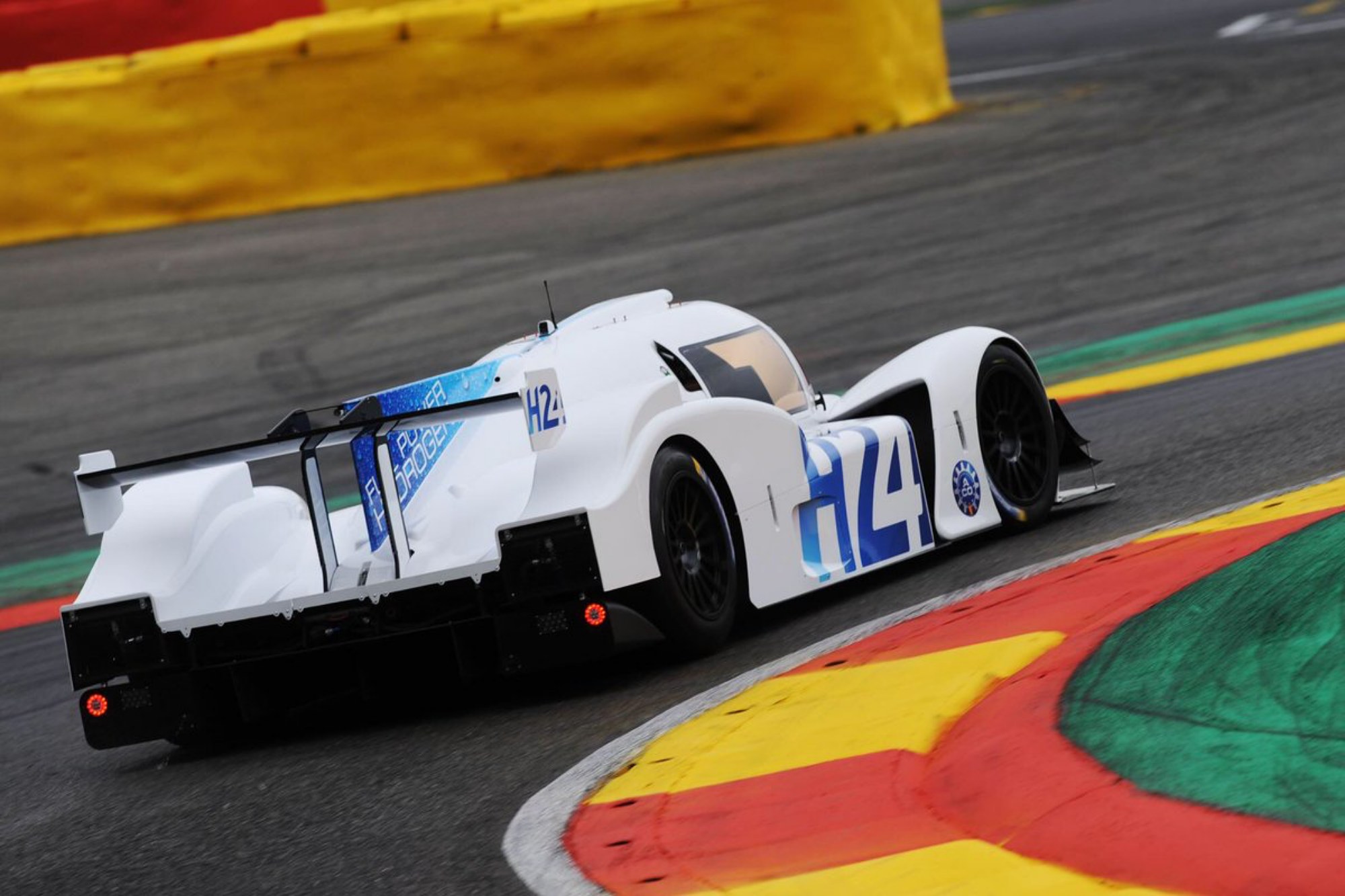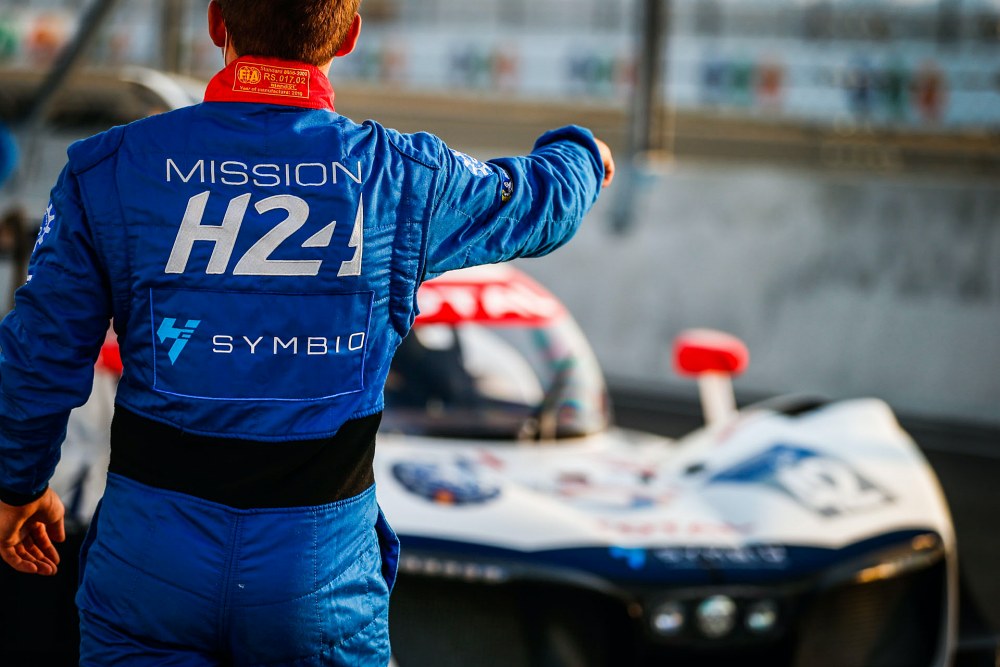The automotive sector is undergoing major change. With manufacturers around the world scrambling to find more sustainable solutions for motoring and spending billions on R&D, it’s becoming clear that the cars we drive in a decade or two’s time will be radically different to the ICU-based machines we’ve been using since the inception of the mass market motor car in the early 20th century.
At present, the talk is electric, electric, electric, with most major brands committed to replacing part of, or all of, their entire ranges with electric-or part-electric models. But behind the scenes, Hydrogen fuel cell power is another movement and while it is still in arguably in its infancy, the technology behind it is progressing apace.

Motorsport wise, hydrogen’s presence has been rather small thus far, but sportscar racing is on the cusp of adopting it and projecting it to a mass audience. If everything goes to plan, before we know it, hydrogen powered cars will be running up front at Le Mans. The ACO believes that from 2024 onwards the technology will be mature enough for major OEMs to use endurance racing as a test bed and platform to market the new technology to consumers and pit it up against hybrid-powered Le Mans Hypercars and LMDh entries.
With such significant change incoming, Travel Destinations has been speaking to numerous people in the industry, most notably, Romain Aubry, the technical manager of the H24 Hydrogen project at TotalEnergies (formerly Total Motorsport), to gain insight.
So to help you get ahead of the curve, we’ll take a look at the Mission H24 project and its role in moving hydrogen technology forward in motorsport. Then in the second part of this feature we’ll delve into the 2024 regulations, which manufacturers are likely to feature and how everything will work.
On a mission
So, Mission H24. What is it, and why should you care? Mission H24 is an ACO-backed project (in partnership with GreenGT, TotalEnergies, Michelin and Adess) that for the past few years has focused on moving hydrogen-powered prototypes from being a concept, to a reality ahead of the new ruleset making its debut. It’s hugely important, the successes of the Adess LMP3-based H24 hydrogen prototype that has been developed and tested extensively in recent years will go a long way in proving that the technology is viable.
Few have seen the H24 car run on-track to this point. Much of its mileage until now has been behind closed doors or in practice sessions at low-key European Le Mans Series events. However, we are on the precipice of finally seeing H24 in a competitive environment, in what promises to be a major milestone for the programme and the technology. TotalEnergies has revealed to Travel Destinations that it will compete for the first time in the Le Mans Cup at Monza next month and from then on in the remaining rounds on the calendar. The car was due to compete in the Le Mans Cup race at Paul Ricard this weekend, but a decision was made on short notice to go testing instead.
You may think: ‘how on earth will hydrogen powered prototypes go from a Le Mans Cup (LMP3/GT3) level of pace to fighting for wins in the FIA WEC in just three years?’ It’s a valid question. There is no denying that the target of having major OEMs fight for overall Le Mans wins by 2024 is incredibly ambitious, but the technology is moving fast.
The development curve of the H24 prototype has been on a steep, upward trajectory since it first lapped Spa-Francorchamps back in 2019 (below). In just a couple of years it’s gone from struggling to coast around Spa to producing respectable, competitive lap times. And the only way is up from here, who knows what the next two years will bring?

The target this year is to be able to run at the same pace as the GT cars at the back of the field in the Le Mans Cup. At Portimao in 2019 the first generation prototype was a few seconds off, now the expectation is be mixing in with the GT3 entries.
Lighter, better, faster, cooler
There are three major obstacles for H24 to overcome before the performance levels hit the ultimate target of front-running pace in an FIA WEC race: weight, cooling and range.
The H24 car is a lot heavier than the other prototypes that race in ACO-sanctioned series each year, because it houses weighty electric motors, a battery, fuel cell and hydrogen tank.
Extensive developmental work has already been done to combat this. The car that will be seen by the public in the Le Mans Cup this year is the second second-generation H24 prototype. It’s radically different aerodynamically to the original chassis that was first seen back in 2018, and crucially, 150kg lighter, making the performance targets appear more achievable. This has been achieved by utilising a new battery that stores more energy and produces more power, reducing the number of motors from four to two and installing a more compact gearbox. Yes, it’s still heavier than an average GT3 car, but the progress is undeniable.
As for cooling, look no further than the huge air-box over the cockpit, it’s needed to ensure the temperature stays manageable when it’s pushed to the limits. The heat created by the process of electrolysis that occurs in hydrogen fuel cell devices, that generates the electricity to power the battery, (and the car) is significant. It’s why the original LMPH2G featured a huge front grill that effectively acted as an enormous oxygen vacuum cleaner.

Then there’s range. Range anxiety is a phrase used all too often when discussing modern EVs. Put simply: can the car get from A to B without having to stop for a lengthy battery charge? While the H24 prototype doesn’t need a lengthy recharge, it still has range challenges of its own. The crux of the problem is whether or not the car run at the desired performance level long enough in racing conditions to match the stint lengths of its petrol-powered counterparts, and thus compete over the course of a full race? (You can see how this challenge translates to directly to lengthy drives in an everyday setting…)
“An objective is to do 10 laps at Le Mans between stops,” said Aubry. “And it is feasible, the manufacturers feel it’s reachable.”
Once the car is out of gas stored from its initial fill-up it needs to be re-filled in a similar way to a car with a combustion engine. And this is perhaps where the benefits of hydrogen power over EVs is most clear, since the tank can be filled in just a few minutes. And lest we forget that the car will only omit water out of its exhaust(s), and the hydrogen used will – theoretically – be produced in industrial quantities using a greener process than the process used to manufacture the lithium batteries used in EVs in the future.
Now, this writer will admit that the last part is the base of a hugely complex aspect to sustainability in mobility, and one that really warrants a deep-dive of its own. So for the purposes of this piece, we will leave that aside and focus on the racing. The solution is clear, if the range of a hydrogen prototype is long enough that it can outlast a petrol/hybrid-powered challenger, then the additional minutes needed in the pits at the end of each stint can be balanced over a long race because fewer stops will be needed.
Fill me up
This piece could not be written without mentioning the TOTAL filling station that fills the Mission H24 prototype. It’s a colossally important piece to this puzzle and deserves your attention. It’s a bespoke portable station that has been developed by TotalEnergies, and it works! It may not look flashy, but its significance cannot be overstated. The container that TotalEnergies now takes trackside solves the underlying issues surrounding infrastructure at circuits. Hypothetically, without the need for major investment in permanent purpose-built hydrogen filling stations at each track, hydrogen is viable and has a future in this sport.
“We are working with the ACO about what infrastructure could be needed if at Le Mans we have 6-10 cars in a few years time all powered by hydrogen,” Aubry said.
“What will the paddock look like is being discussed. The objective is not to have a permanent station at each track, it’s to develop something that is as mobile as possible, because it’s hard to get circuits to invest at this stage. We want something more mobile than we have today. The technology will evolve and have a reduced footprint.”
Up close it’s also a proof of concept for the future of filling stations in consumer motoring. Hypothetically, a regular petrol station could be converted (or part-converted) to accommodate hydrogen in the future if it becomes the dominant technology used to power consumer cars using some of the technology within TotalEnergies’s station.
How likely a future scenario where every petrol station slowly evolves into a hydrogen station is unclear, as the road-map to a more sustainable future for the automotive industry is inherently political. TotalEnergies believes in its invention though, and expects that hydrogen is still on track to find a place in society.
“We see passenger cars as moving to electricity,” Aubry stated. “That’s a political decision in Europe, we think because the technology is more mature. But hydrogen should appear in heavy mobility so buses, trains, trucks in a decade or a little more. For aviation, that could be an option too.
“It’s going to be an interesting few years ahead of us, that’s for sure.”
Stephen Kilbey
Do you want to be trackside at Le Mans in 2022 or 2023 for the 24 Hours? Call our offices today on 01707 329 988 or email info@traveldestinations.co.uk to make a booking.
Images: Green GT & Mission H24

